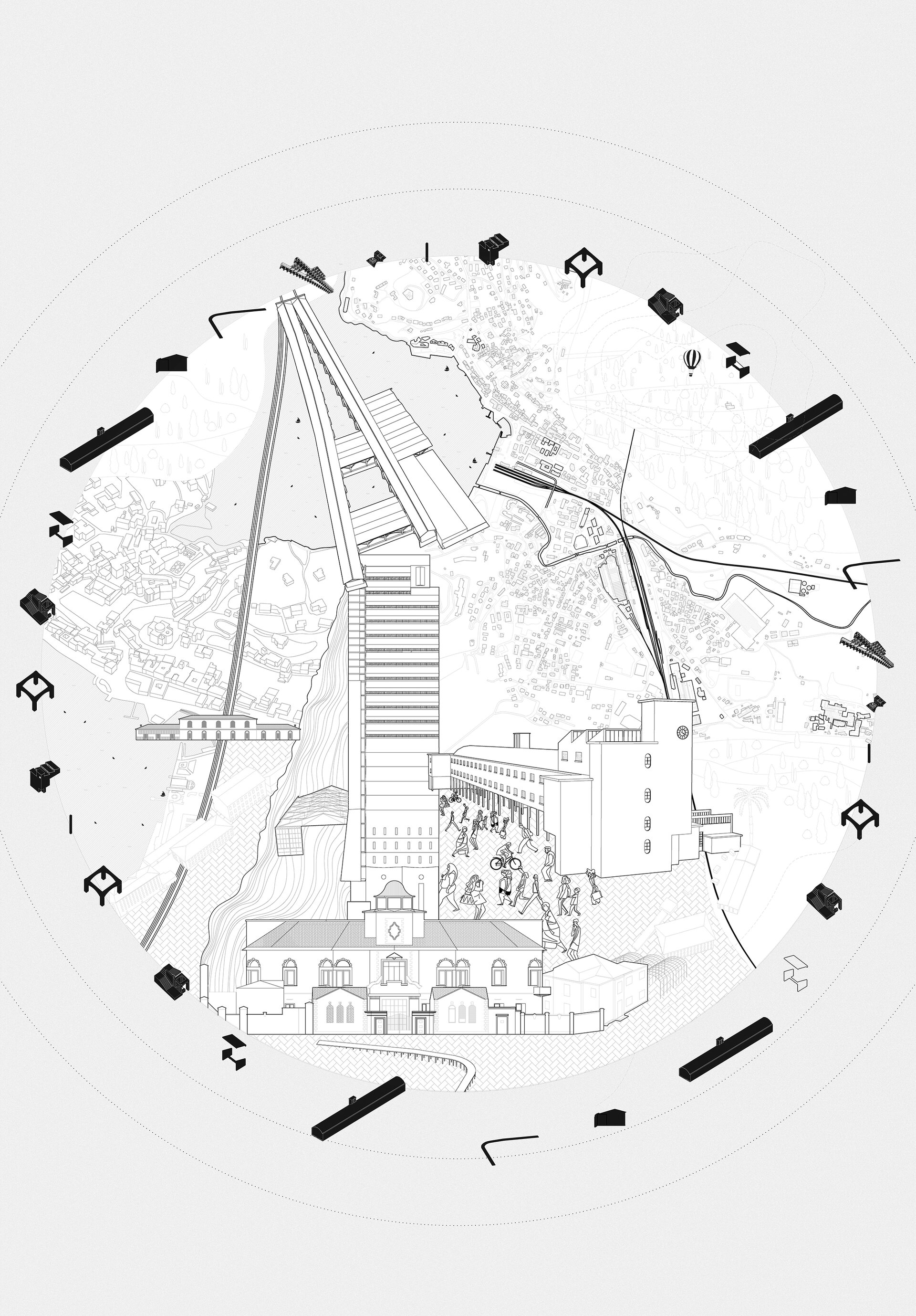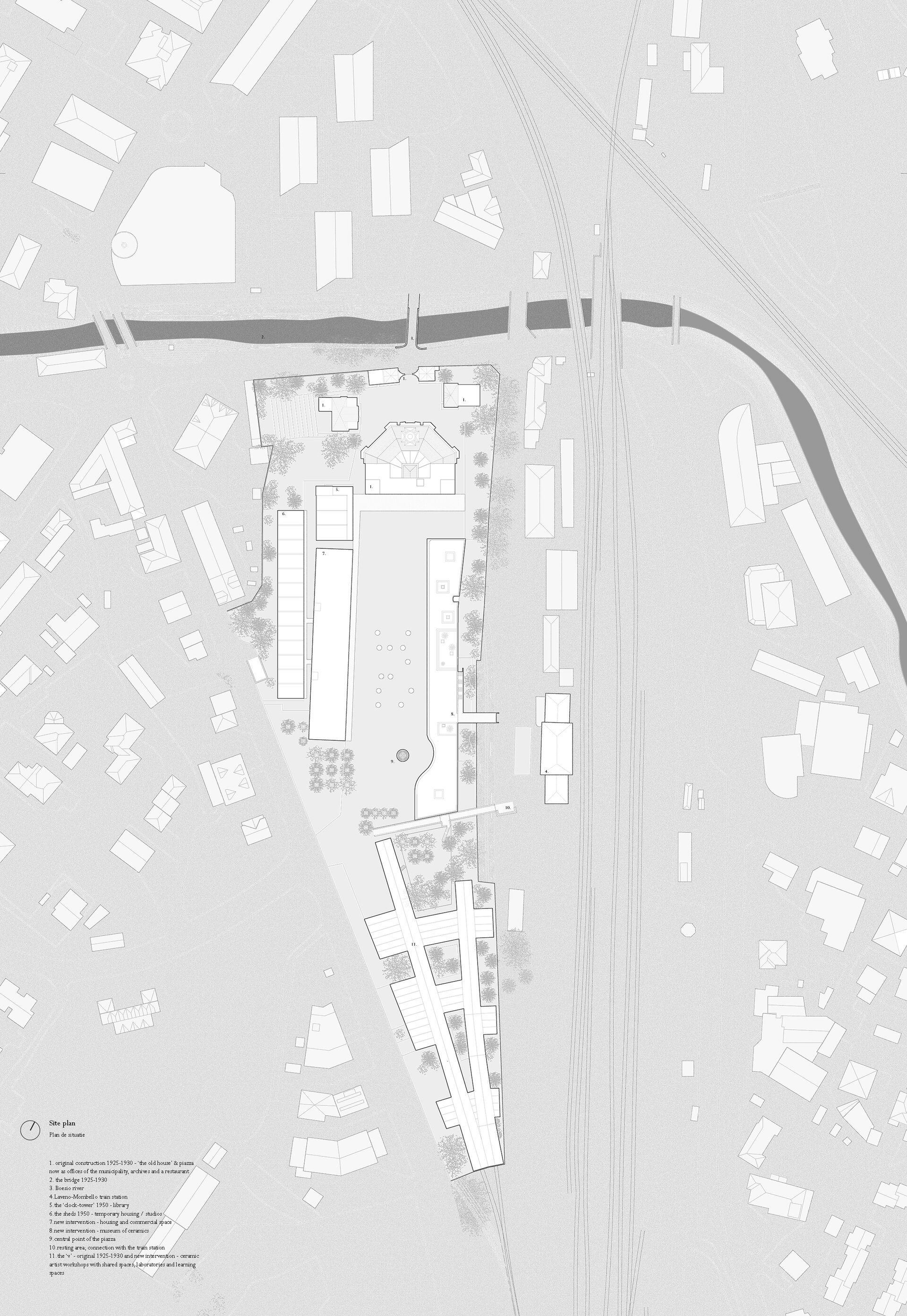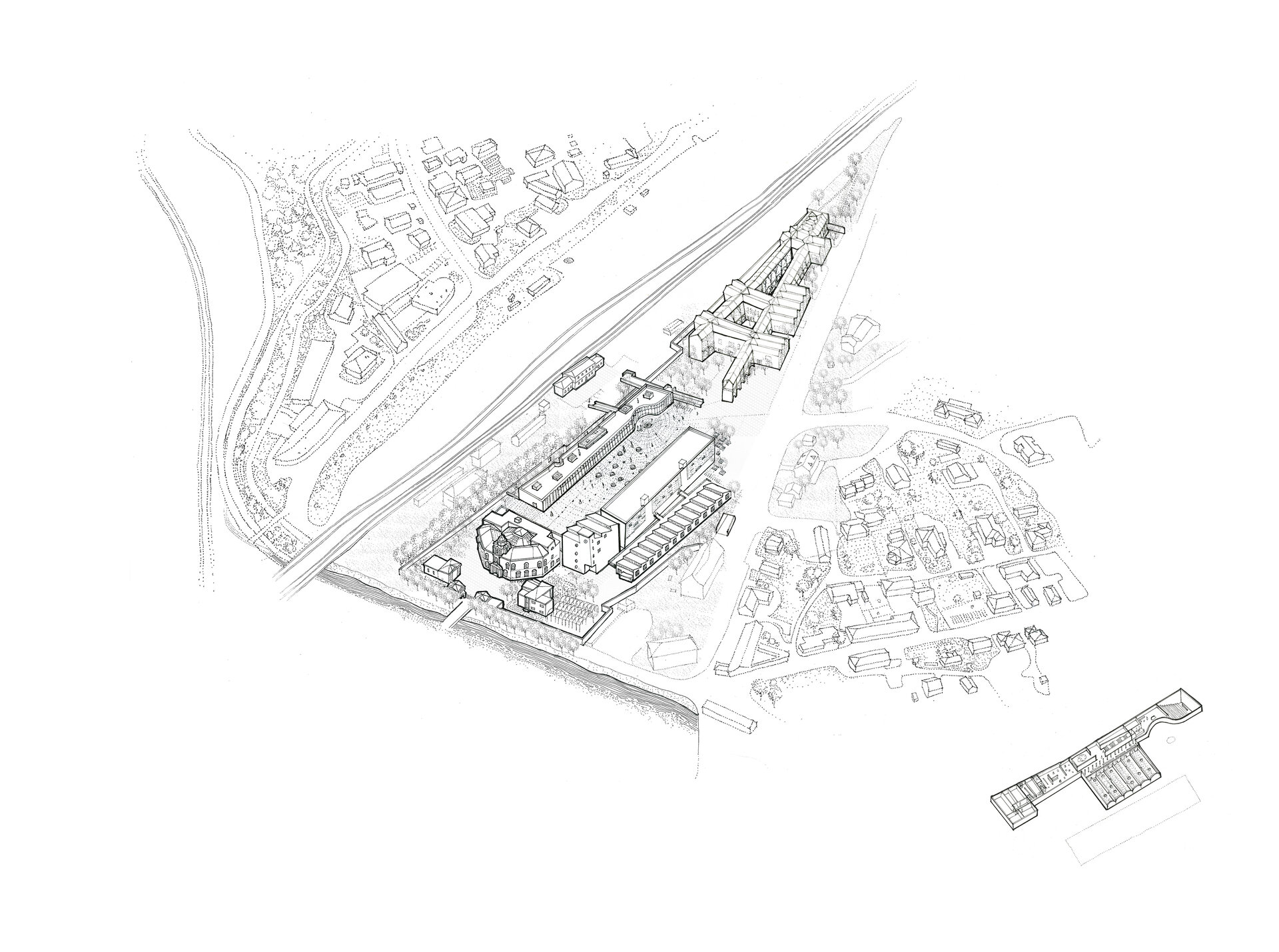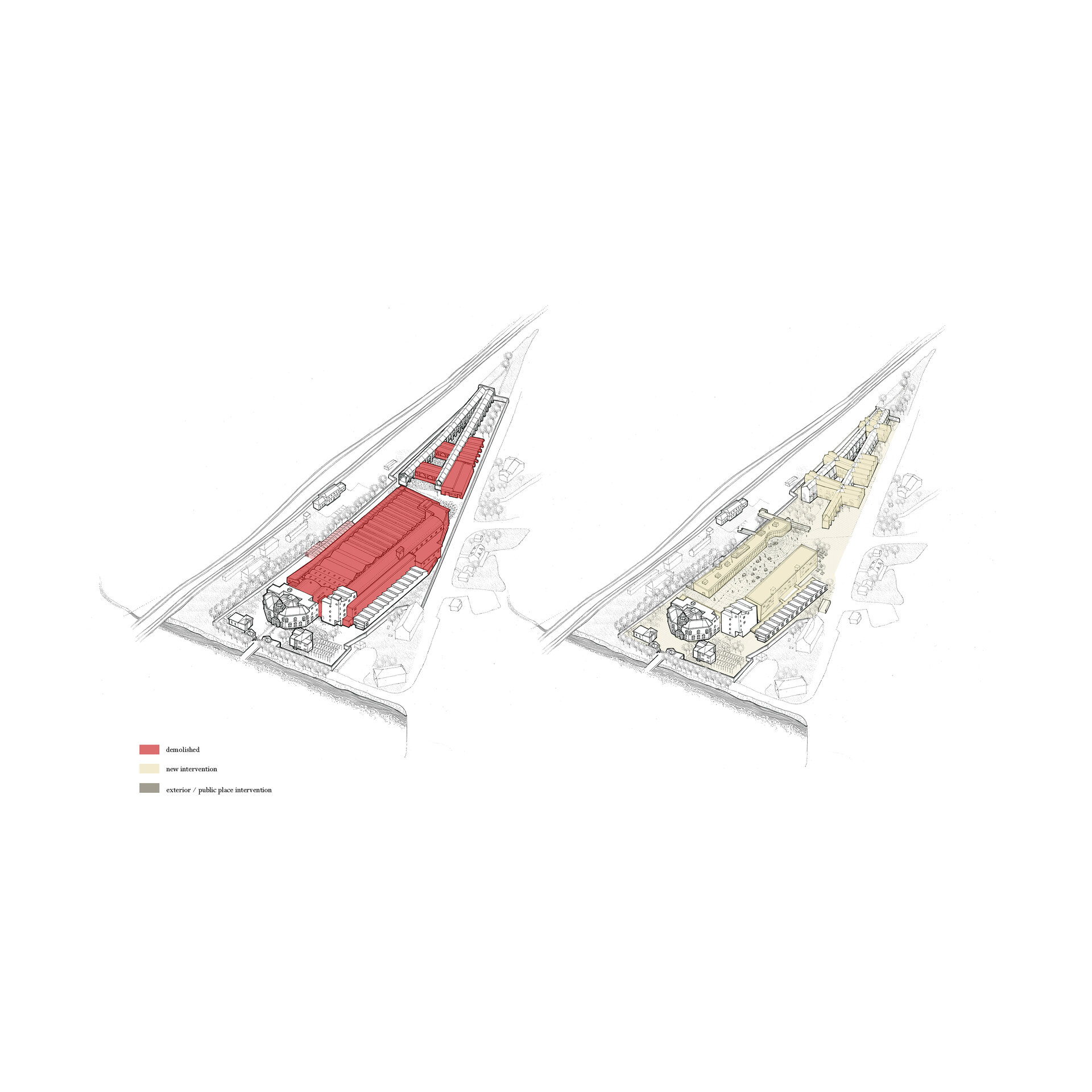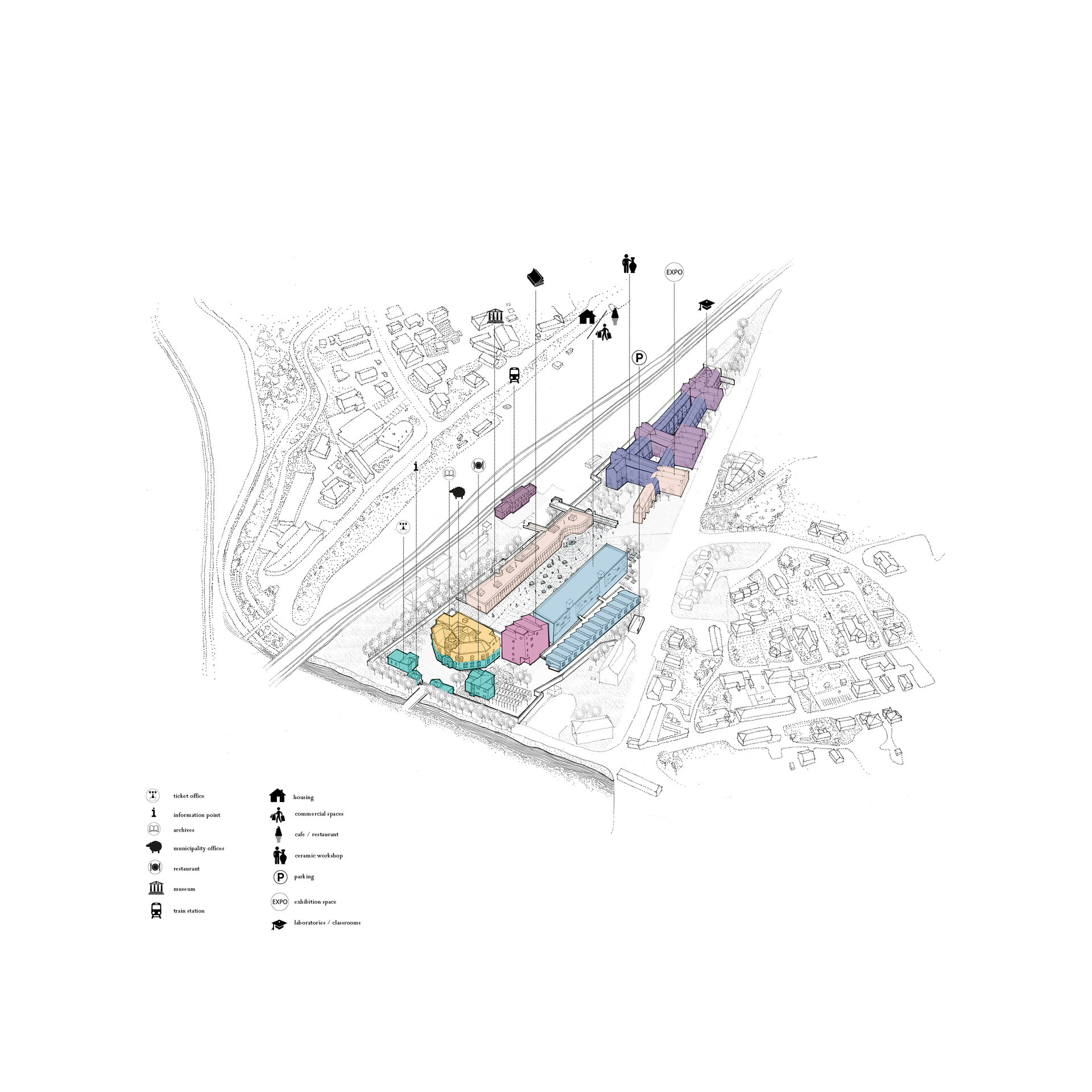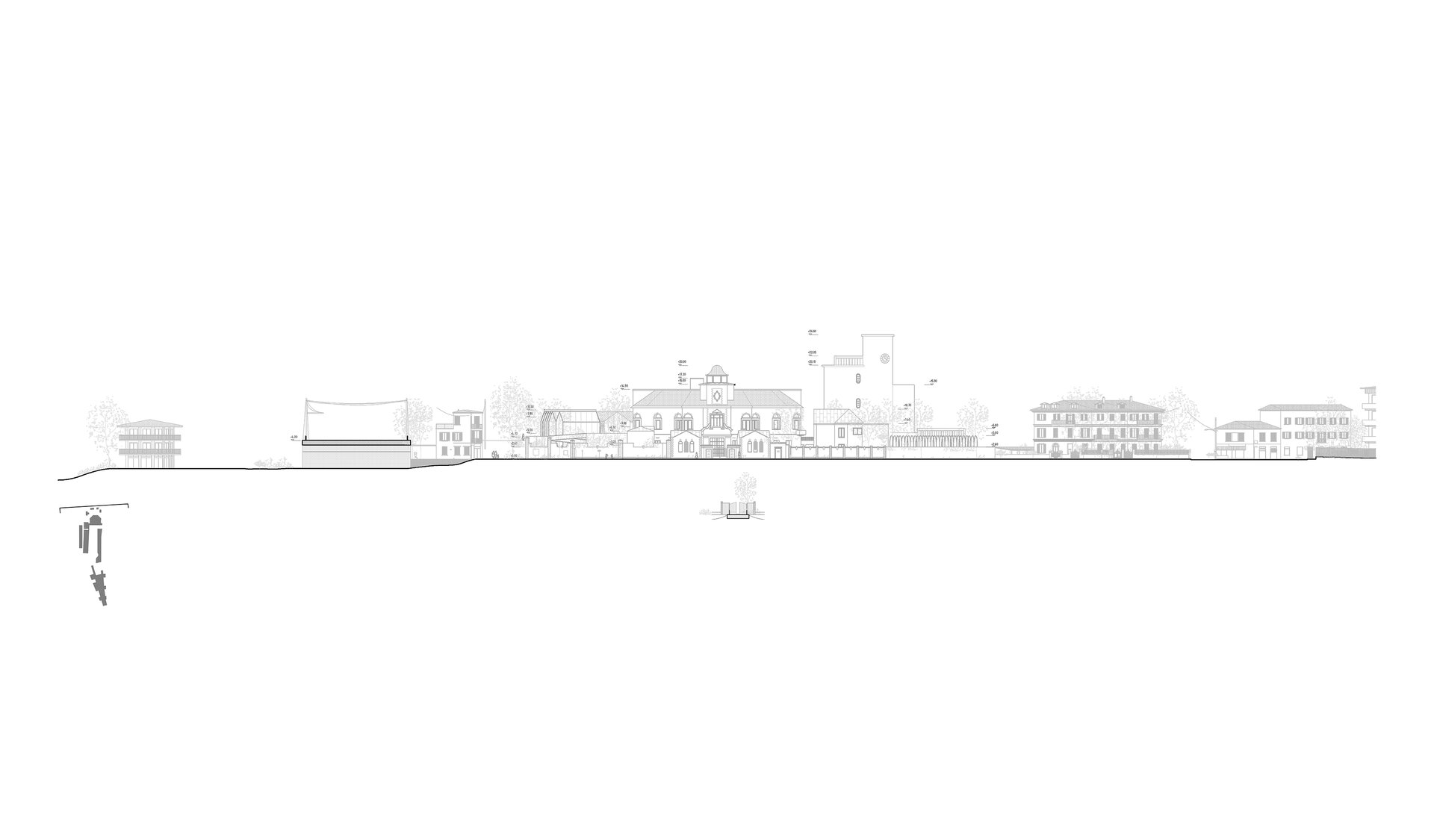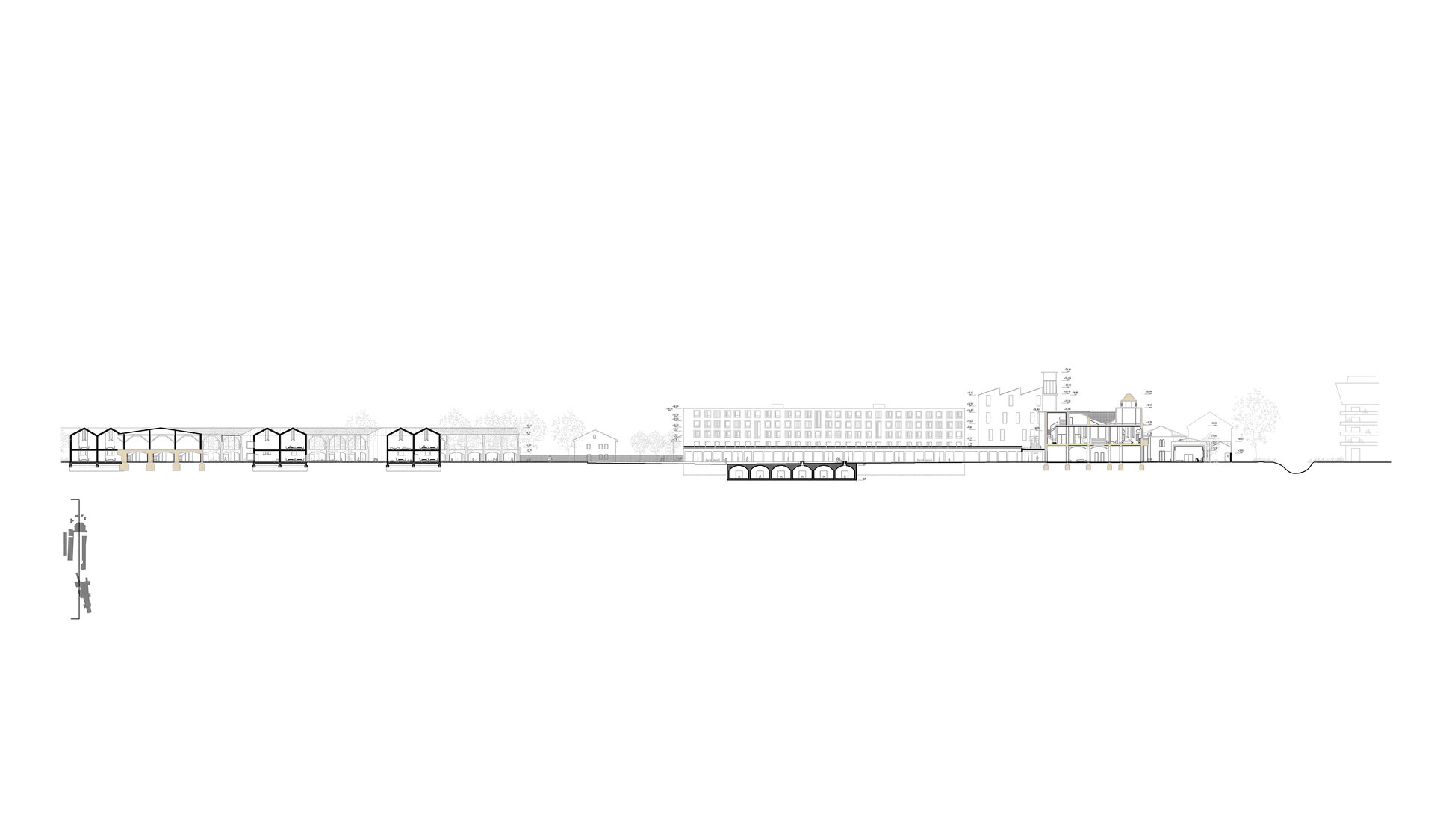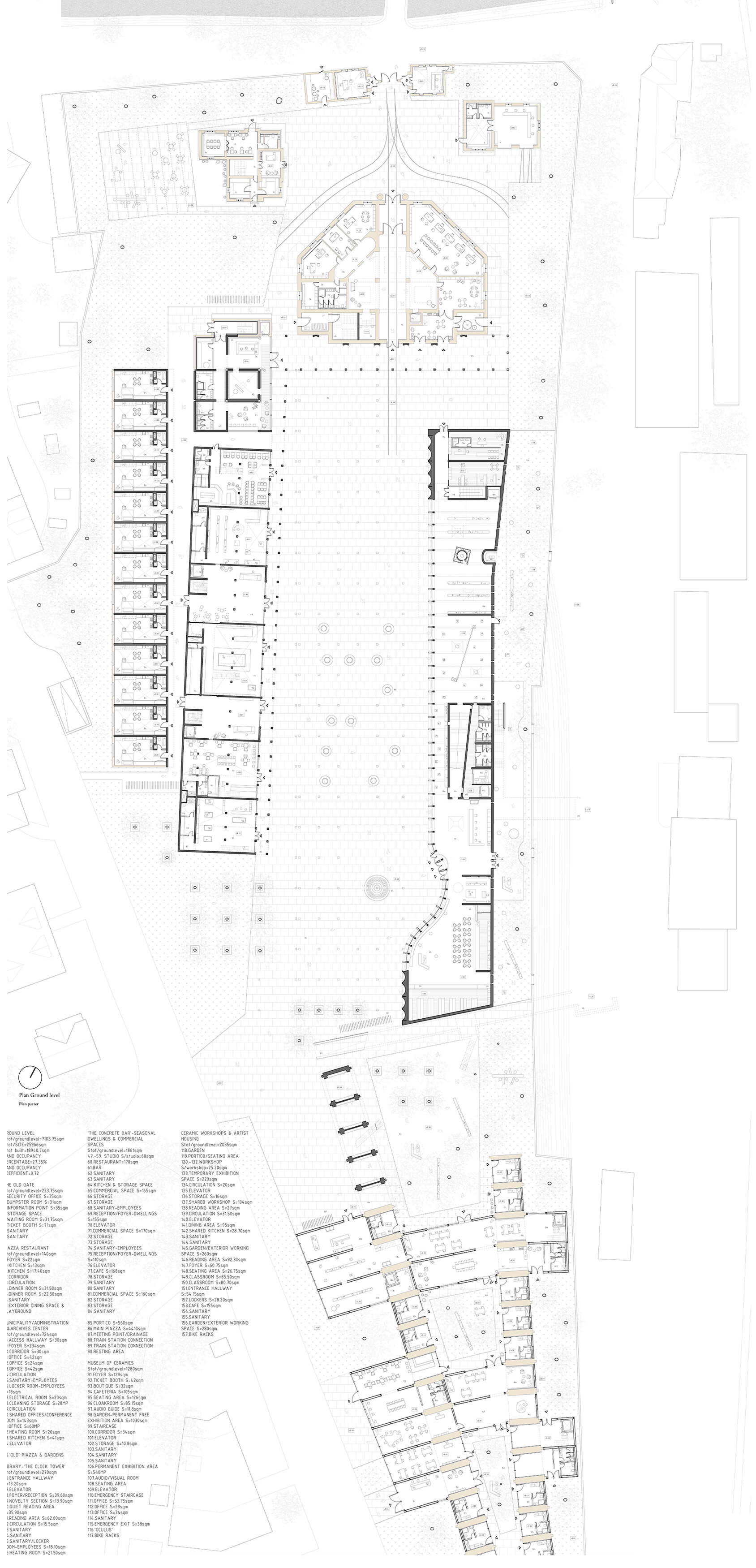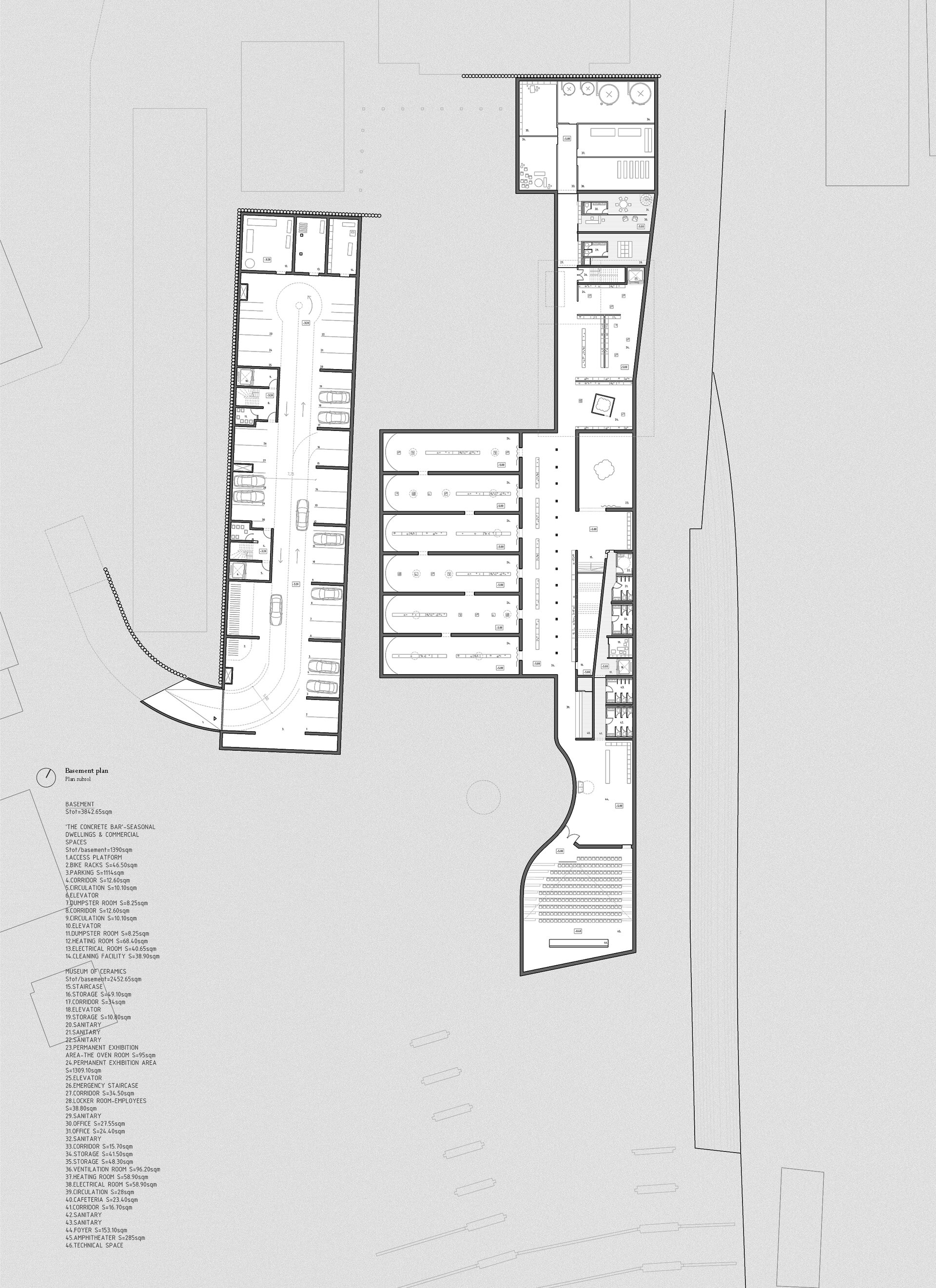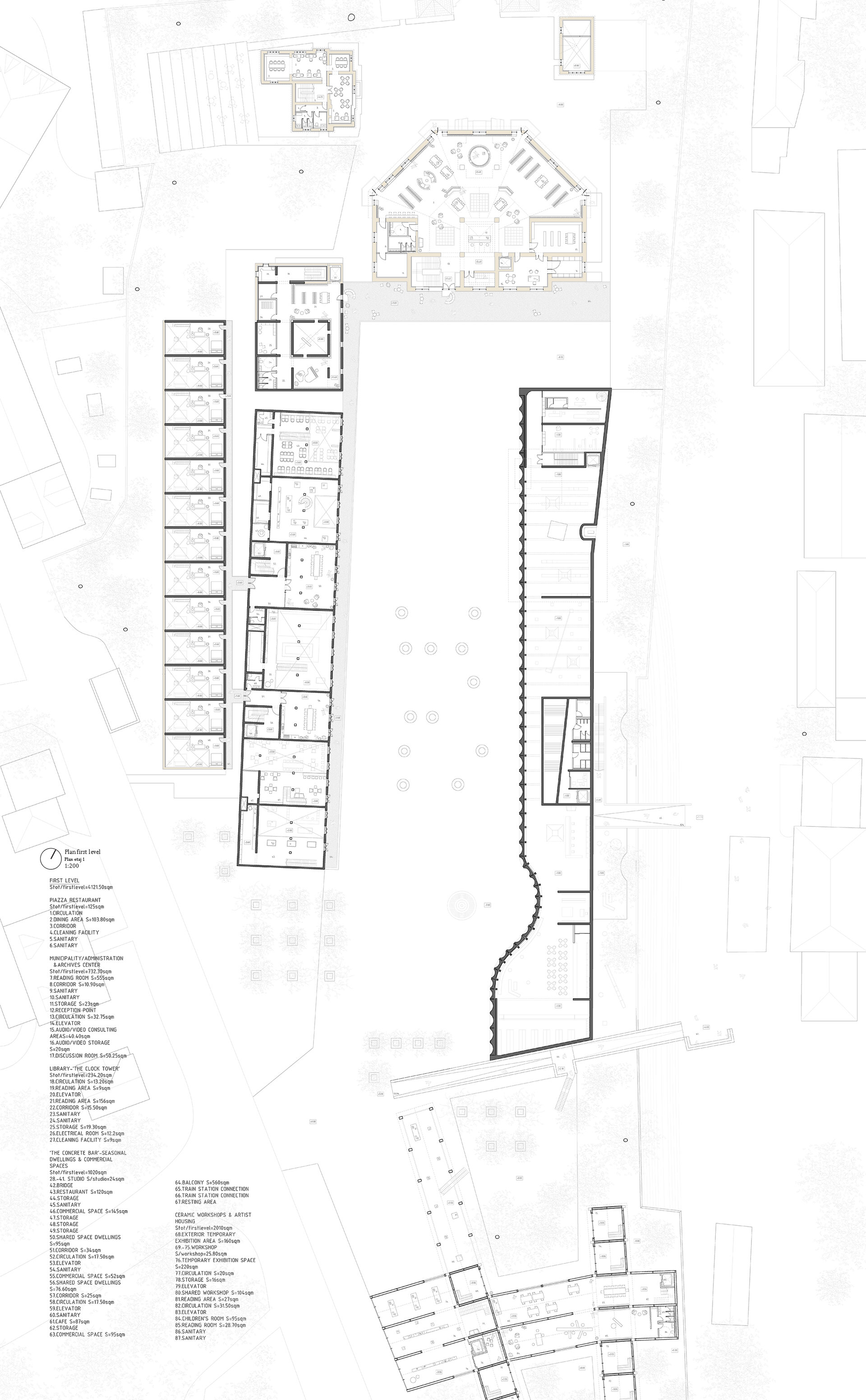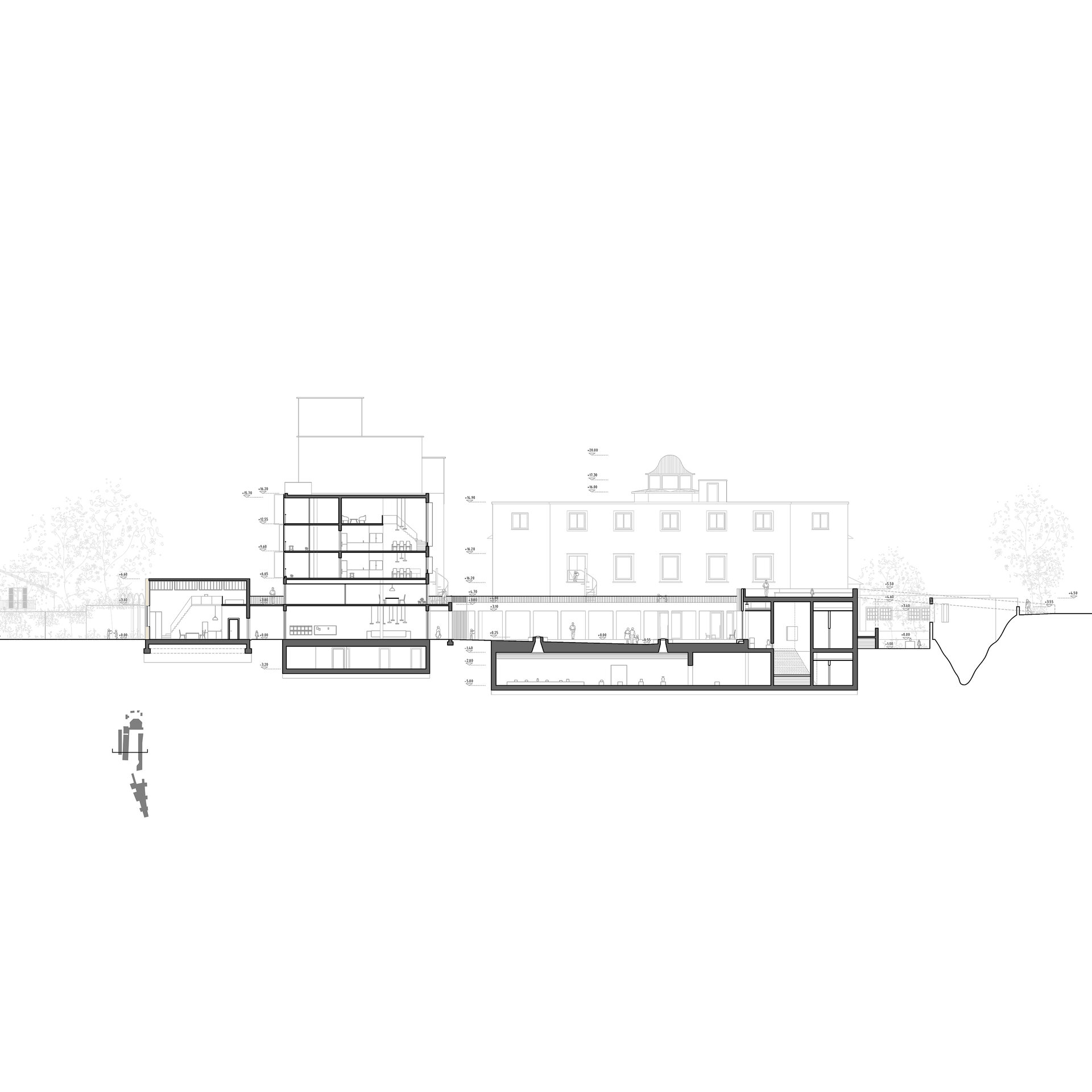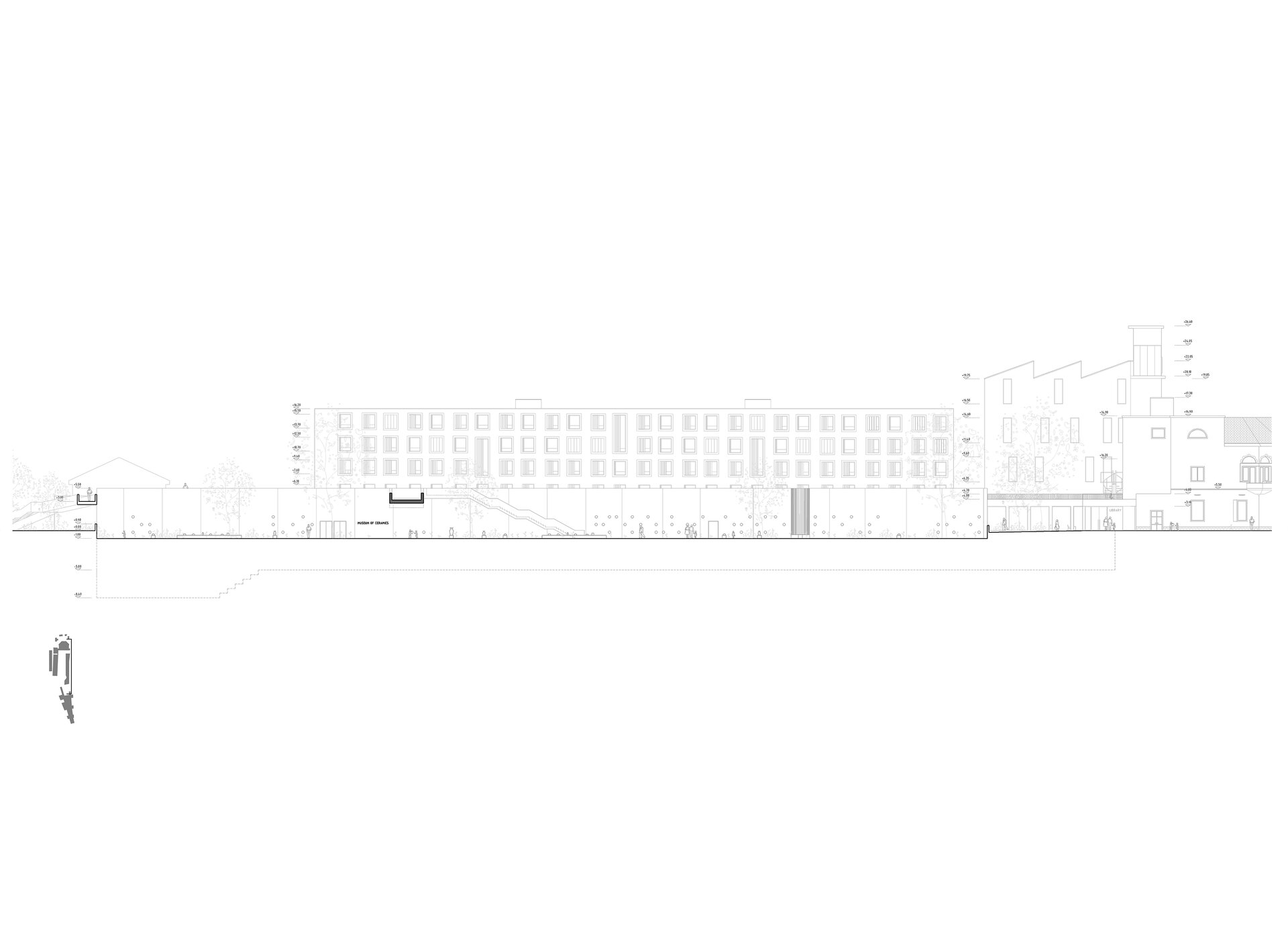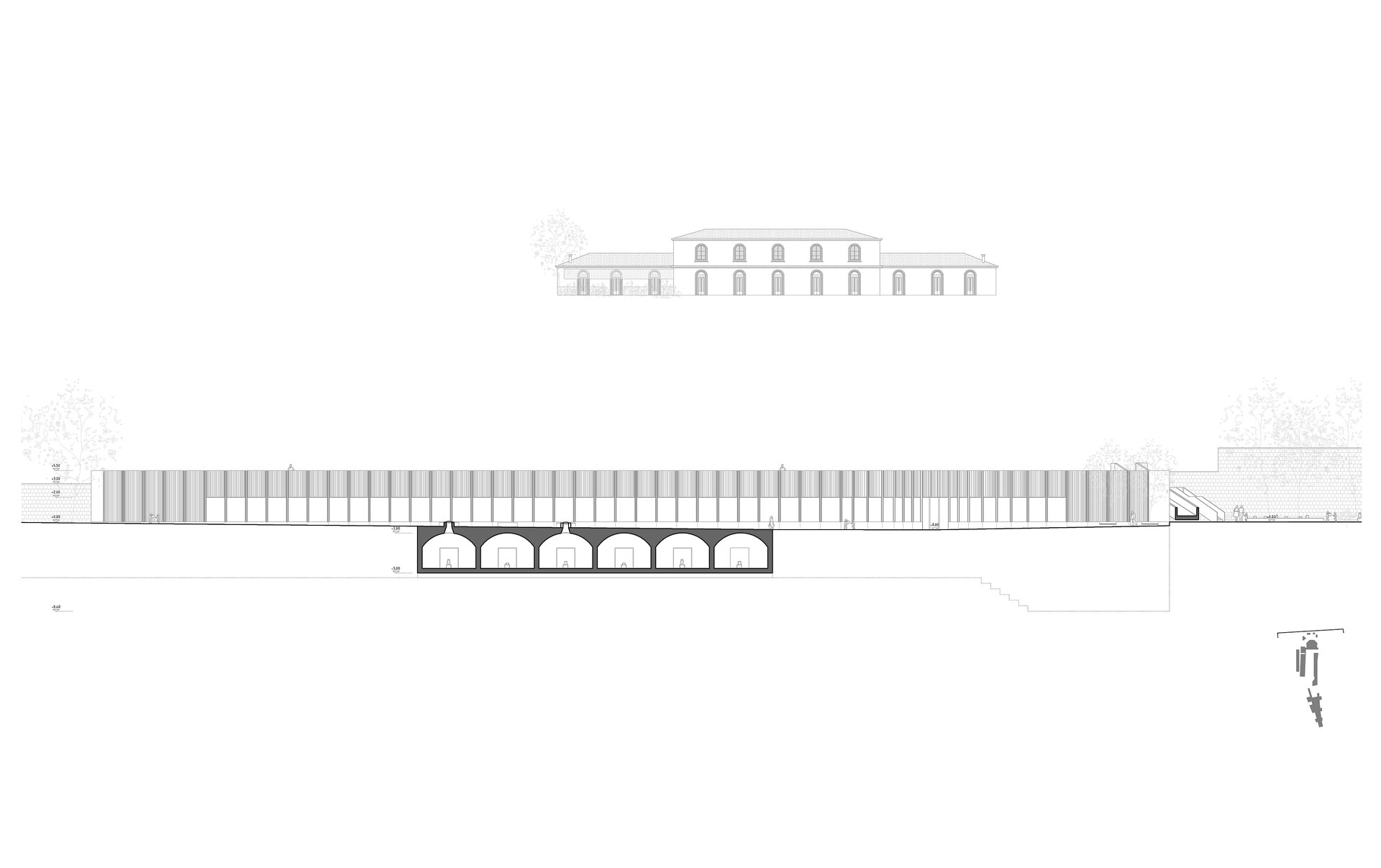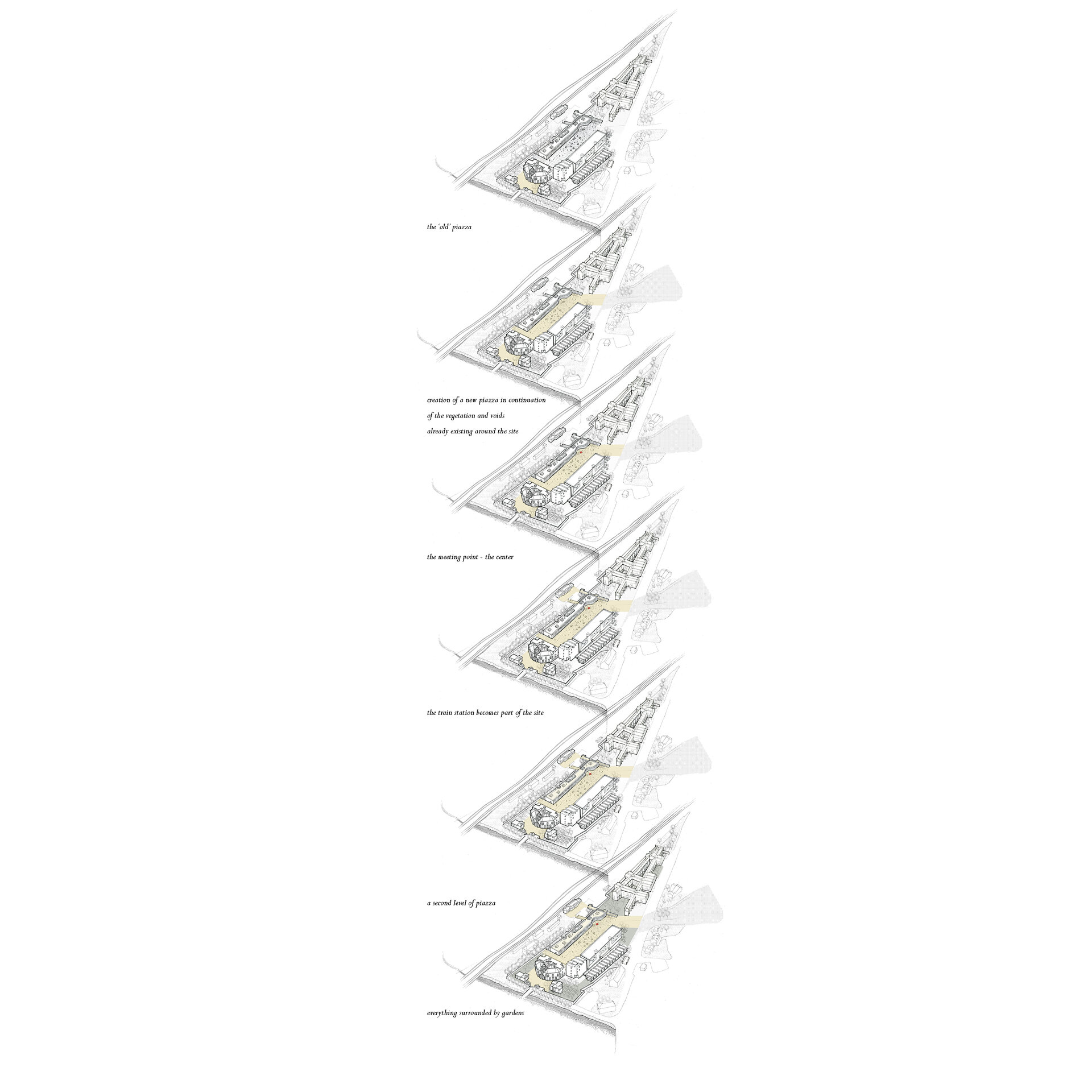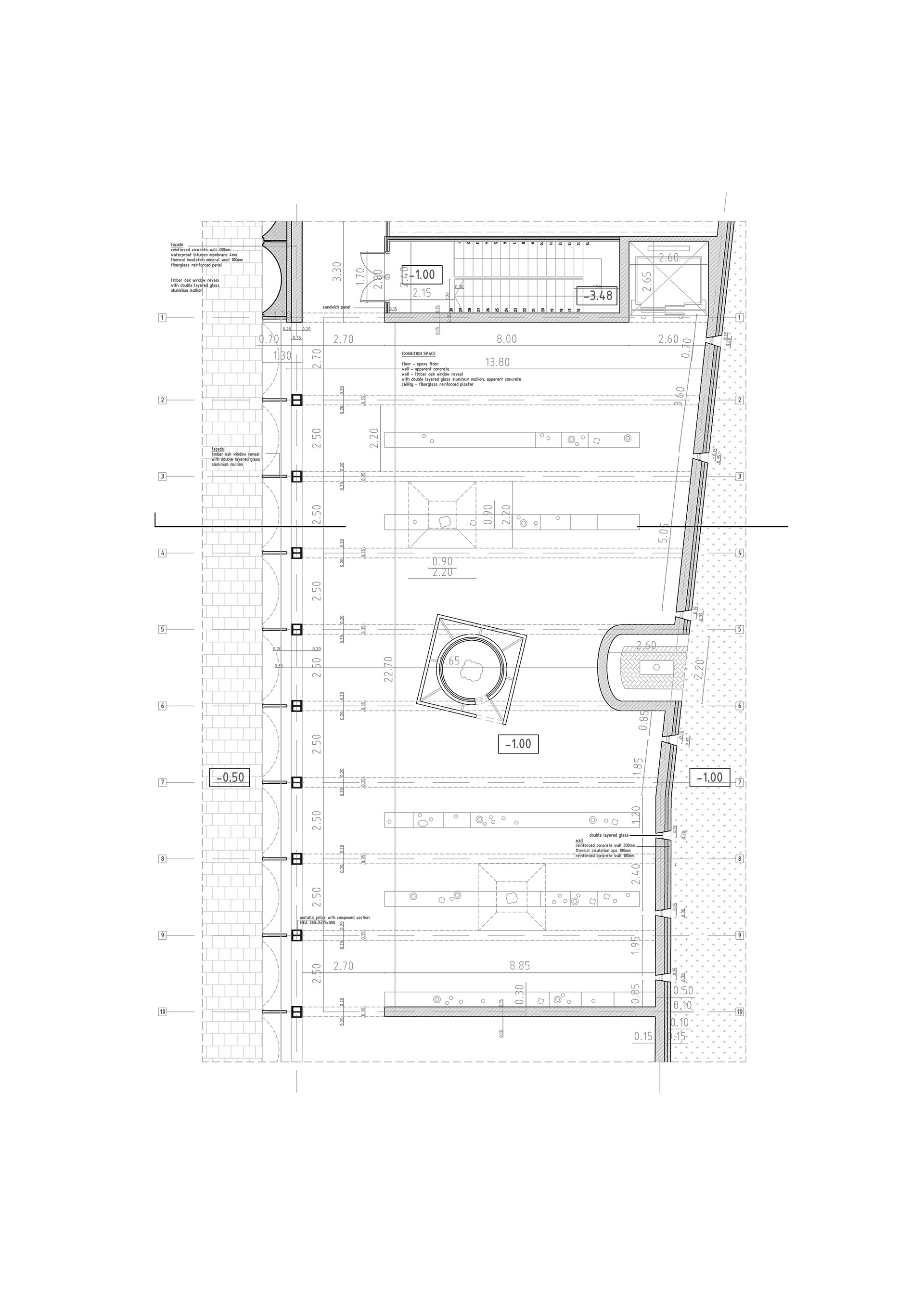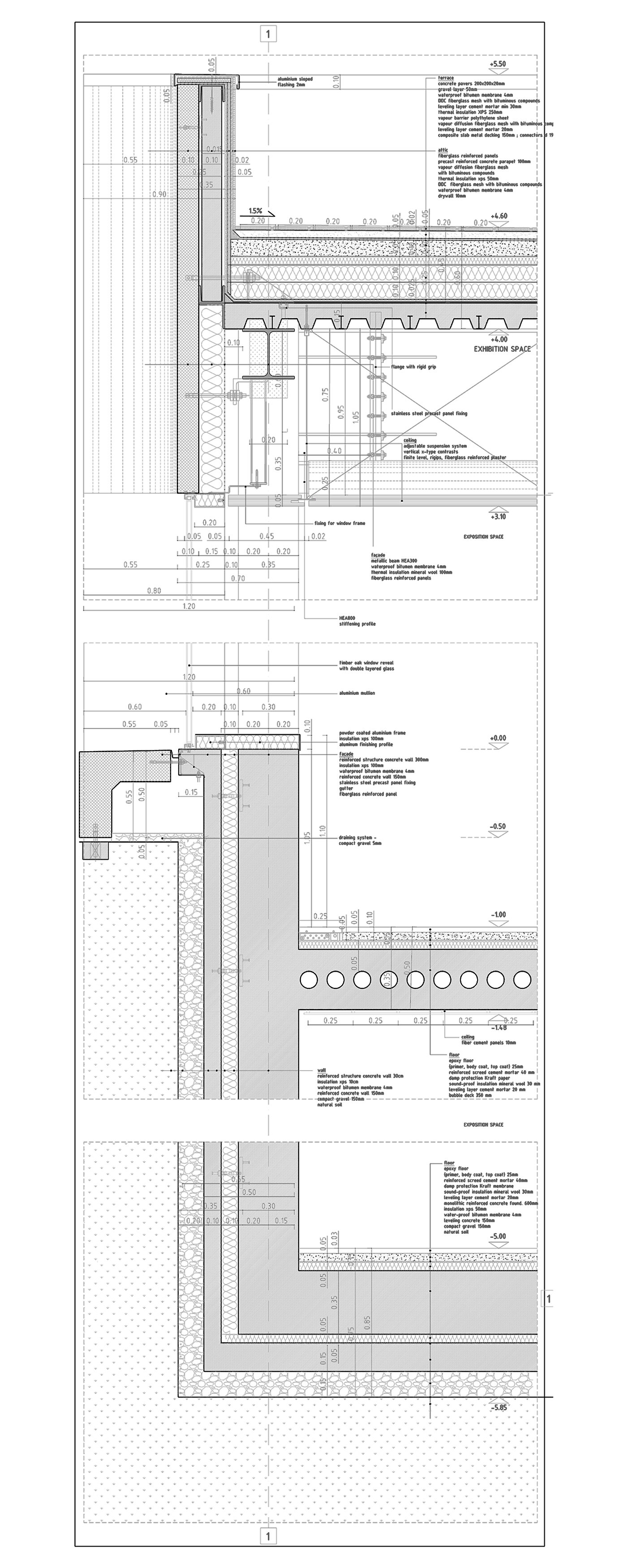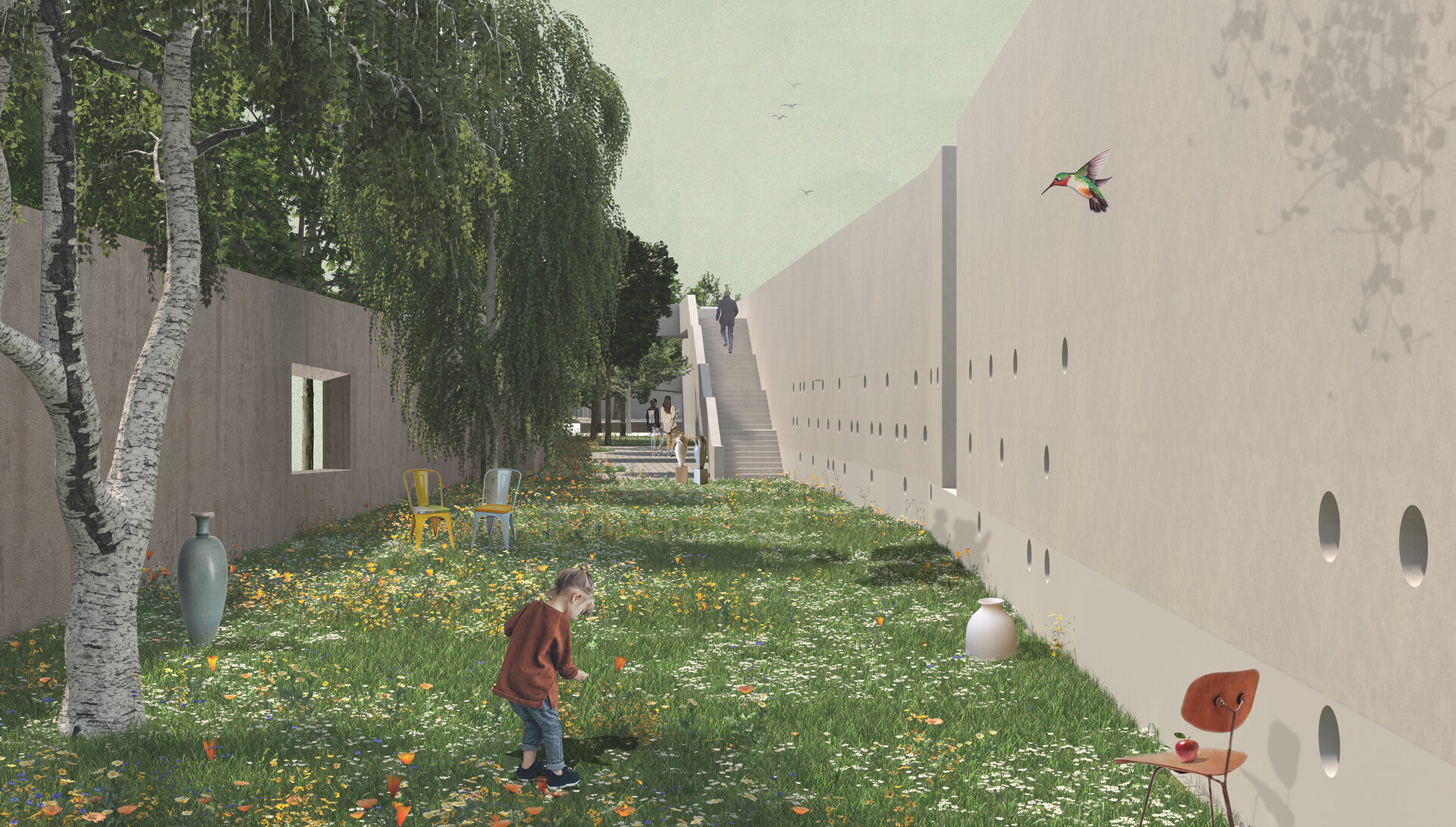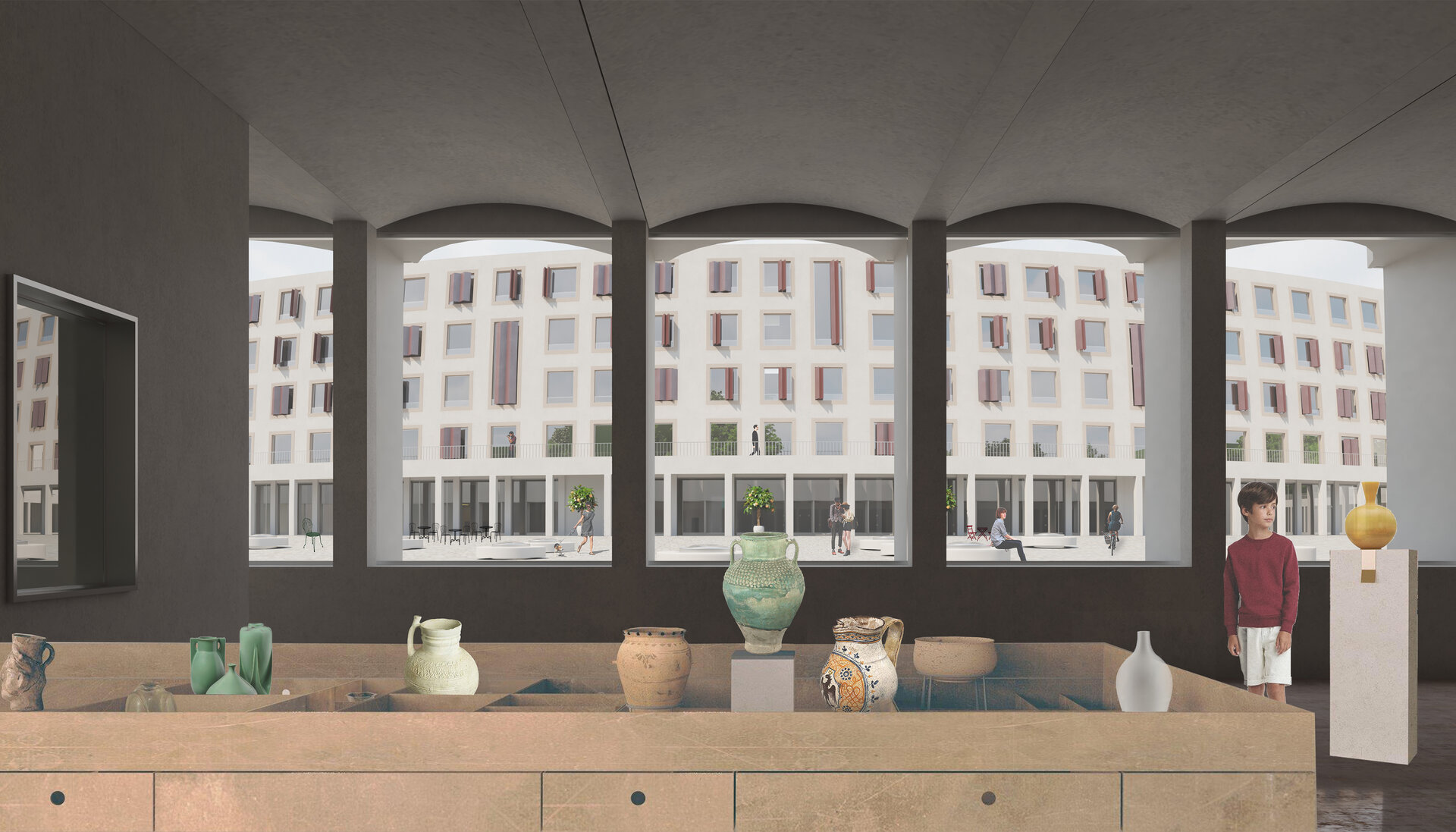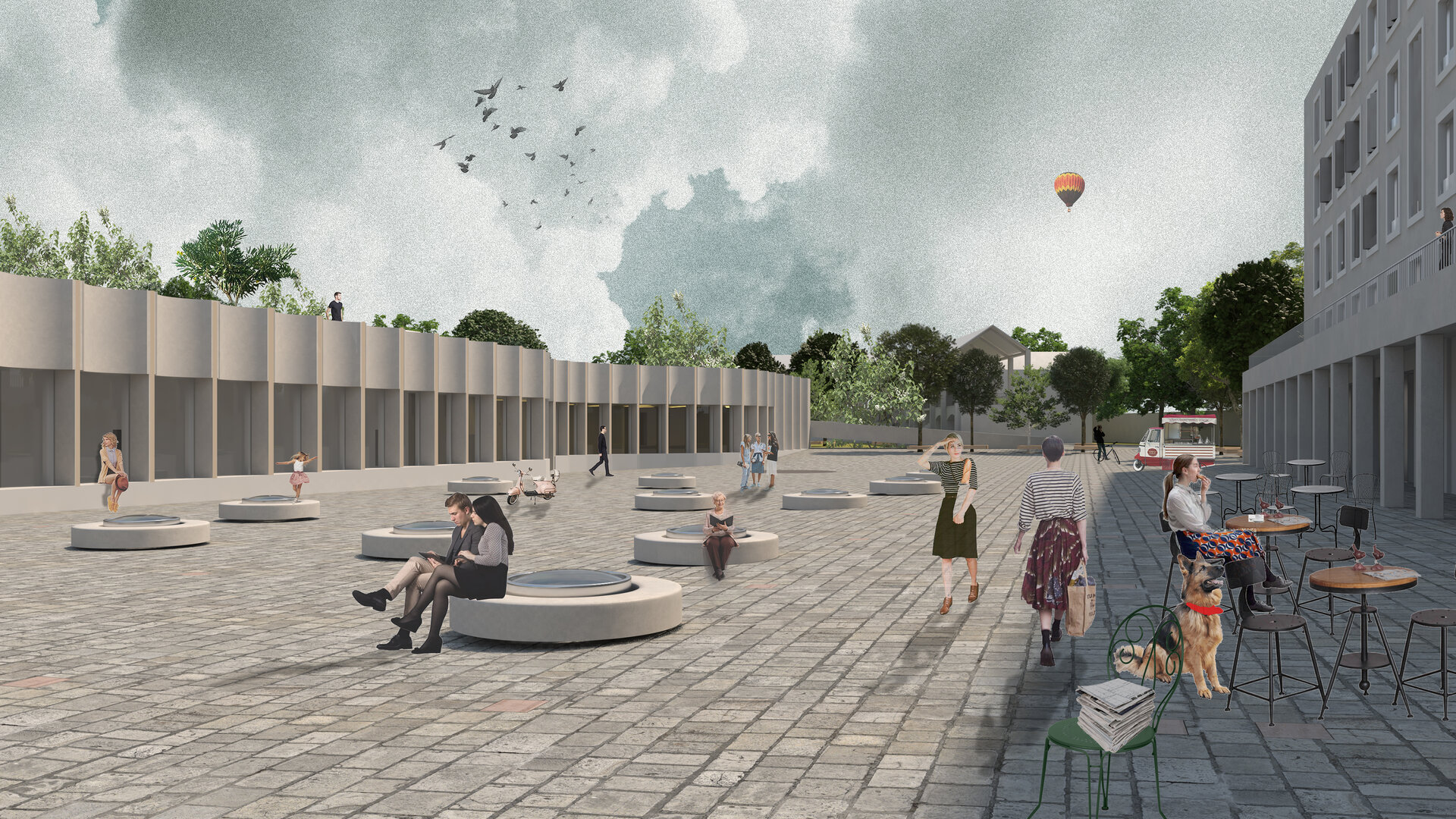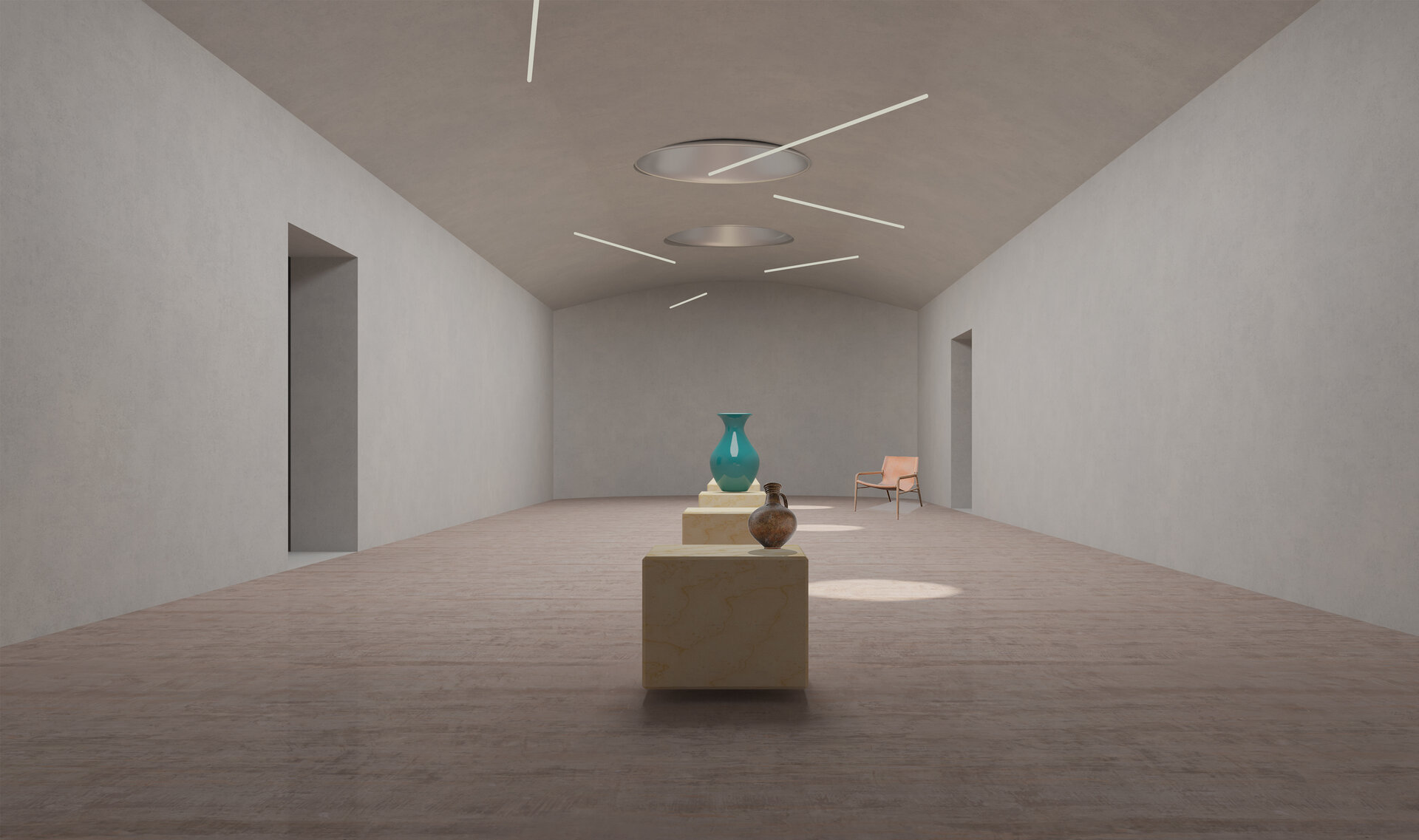
A New City Center – Conversion of the Pozzi Ceramic Factory, Laveno, Italy
Authors’ Comment
The Industrial Revolution and an outcome of men’s personal struggles, curiosity, but also great excitement, may lay today as an apparent failure of the society in face of the heritage and traces left. Mastodons and high chimneys, concrete fortresses and machines, all stand before us as proof of a past era, maybe difficult to perceive and understand nowadays.
Today, we have to take a look at towns such as Laveno. Being a small lake center, with no more than 1 500 inhabitants, around the mid-19th century, whose little and humble houses were built around the parish church, on the shores of Lake Maggiore, Laveno represents one of the particular situations where significant intervention is needed. The town is situated in the north of Italy, the province of Lombardy and, was once only animated by the weekly grain market and characterized by its agricultural activities and fishing.
A unique whole of memories, the former pottery of Laveno is a mastodon that fell asleep, standing inside a 27 000 m2 building, that the logic of adults did not manage to wake up from its deep torpidity. The site is the result of two major interventions – first during the years 1925-1930 and, the second, during the ‘50s. Balancing between the reality of the situation and imagination, a simple series of observations can build the grounds for upcoming stories and interventions. The factory itself is built through different sequences of narratives, depending on the perception related to how close and intimate our encounter with it is.
But it is no ordinary building, and thus, no ordinary place. In the moment, the story writes itself between two separate worlds, as the factory stands in complete silence at the interior of its tall walls, detached from the city’s reality and rhythm of life. It stands up as an entity itself in-between two world – its past liveliness and its current stubbornness to stand still in the middle of the town.
Like in Jorge Luis Borges’ fictions, a universe in a form of a vast factory containing all possible an infinitude of elements, of certain formats and sets is created. The Factory stands up in the center of the town and its community. And, in the moment when the factory becomes the main character of our story, new scenarios are prescribed and along with it, new perceptions of a place: not a perception that replaces the old, but completes it. After each process has ended, it is returning with receptivity to the place, encountering it again, as for the first time.
Through a particular methodological approach, the project manages to find its solution through an act of dismemberment of components into specific sequences and elements of architectural vocabulary, which become source for the new intervention. This methodology of intervention tries to leave behind an awareness of the presence of the place and of the abundance of atmospheres that are trapped within it.
The main purpose of the project remains the reinterpretation of a city center - a city center that addresses to the former industrial neighborhood, which includes diverse programs and activities: from a reinterpretation of the classical Italian piazza, to a library, municipality offices, commercial and public programs, temporary housing, to a Museum of Ceramics and ceramic workshops. The intervention searches for a way to repurpose the former industrial site and redevise it in pieces that address the urban scale of the town and its immediate surroundings.
- Beyond the ruin. The conversion of the former tobacco warehouse of Isaccea
- Balneo-physio-therapeutic recovery center. Extension of Sylva Villa, Băile Govora
- Shelter with dignity
- The Bucharest City Loop
- Fort 13 Jilava. Political repression museum and research center
- Activating industrial premises – Student Center
- Hotel at Capidava
- Palaeontology research and visitor center – Hațeg District
- Memorial for the jews of Bukovina
- Agri-Park on the Nikolics domain
- Johann Michael Haydn Music Institute
- Creative Industries Factory in London
- Urban Cistern, Amman
- Refunctionalization and extension of the former sanatorium for border guards, Herculane Baths. Centre for body-mind treatment and accomodation
- “Țara Hațegului” International UNESCO Geopark. Fragments. Territorial diversity path
- The Roundhouse: built heritage academy
- Equestrian center of recovery and leisure on the former racecourse of “Nicolae Romanescu” park
- House of Movement. Ballet school and performing arts center in Bucharest
- Lacustrine Resort. The Danube River at Corabia
- Ludoteca
- Extension of the Baths ensamble, Băile Govora
- Drama Memorial
- New Public Architecture as Infill in Historical Context, Bucharest
- ECORIUM Local ecosystem research center
- Artist in Residence – Nae Petrescu Houses – Plantelor Street No. 56-58
- Extention of Public School of Arts and Crafts
- The Castle with Unicorns. Reactivation through school, arts and crafts of the Kornis Castle Ensemble in Mănăstirea Village
- House of games
- A New City Center – Conversion of the Pozzi Ceramic Factory, Laveno, Italy
- Urban Revitalization – Calea Moșilor
- Archaeological cultural center in the Constanta Peninsula
- Lapidarium. Extension of “Vasile Pârvan” Institute of Archaeology, Bucharest
- Pavilion complex within the “Măgura” sculpture camp, Buzău
- Recovery, revitalisation and insertion. Creative hub
- Integration through co-presence – Câmpulung Cultural Center
- C.U.B. Urban revitalization through social inclusion and cultural diversity
- Spatial Connections and Functional Conversion of Customs Warehouse, Bucharest
- ARTnEST – Performing Arts Center on Calea Victoriei
- Trauma and continuity – National Jewish museum, Victory Square, Bucharest
- Technological transformation hub
- The Enchanted Gardens of Ada Kaleh
- The revitalization of the Filipescu Park, Cultural Park Filipescu
- Terry Winery, Dragasani
- Mixed-function tower building (offices-hotel)
- Elca Market Square, Craiova
- The regeneration of Textila Factory
- Via Golden Quadrilateral. C Area. The Flow of Memory in Buciuman Cultural Landscape
